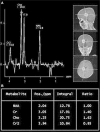Subacute sclerosing panencephalitis - current perspectives
- PMID: 29985487
- PMCID: PMC6027681
- DOI: 10.2147/PHMT.S126293
Subacute sclerosing panencephalitis - current perspectives
Abstract
Subacute sclerosing panencephalitis is a progressive neurodegenerative disease. It usually occurs 7-10 years after measles infection. The clinical course is characterized by progressive cognitive decline and behavior changes followed by focal or generalized seizures as well as myoclonus, ataxia, visual disturbance, and later vegetative state, eventually leading to death. It is diagnosed on the basis of Dyken's criteria. There is no known cure for subacute sclerosing panencephalitis to date, but it is preventable by ensuring that an effective vaccine program for measles is made compulsory for all children younger than 5 years in endemic countries.
Keywords: SSPE; preventable; progressive; vaccine.
Conflict of interest statement
Disclosure The authors report no conflicts of interest in this work.
Figures



References
-
- Dawson JR. Cellular inclusions in cerebral lesions of epidemic encephalitis: second report. Arch Neurol Psych. 1934;31(4):685–700.
-
- Brain WR, Greenfield J, Russel DS. Subacute inclusion encephalitis (Dawson type) Brain. 1948;71(4):365–385. - PubMed
-
- Campbell H, Andrews N, Brown K, Miller E. Review of the effect of measles vaccination on the epidemiology of SSPE. Int J Epidemiol. 2007;36(6):1334–1348. - PubMed
Publication types
LinkOut - more resources
Full Text Sources
Other Literature Sources

